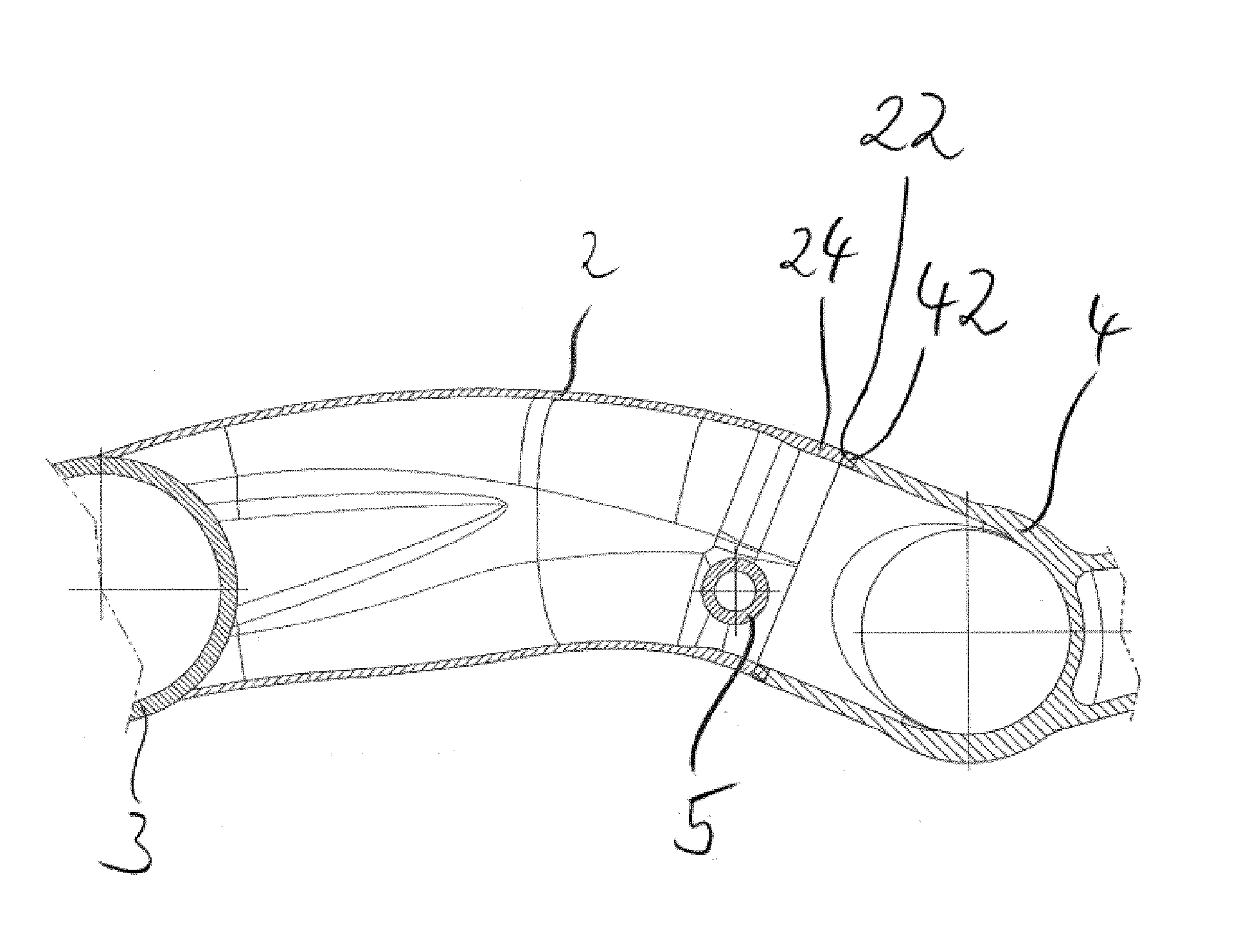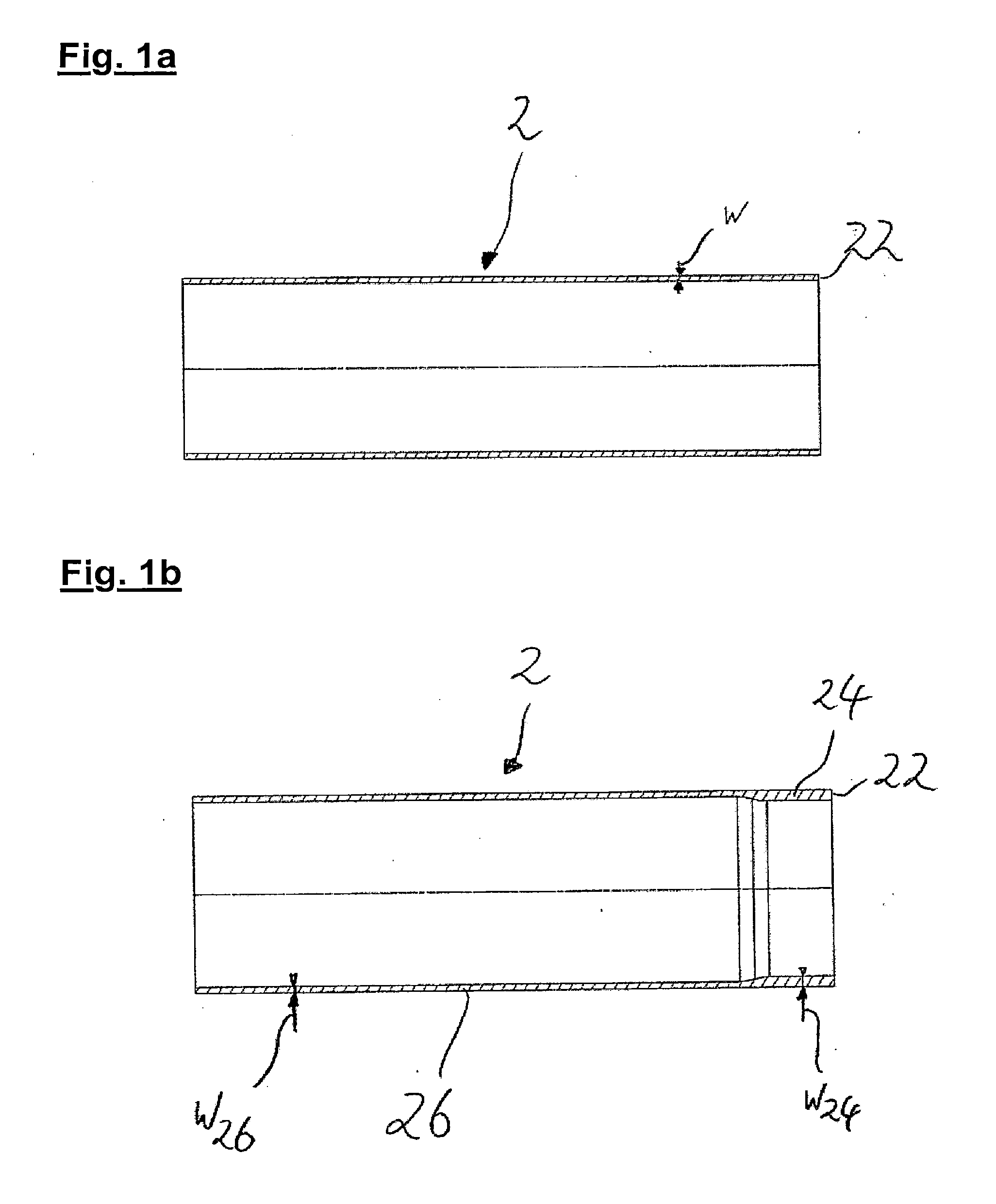Link Unit and Method for Producing a Link Unit
a link unit and link technology, applied in the field of link units and methods, can solve the problems of minor damage to the carrier surface, unimportant unbalances on the components to be welded, and to be expected, so as to improve the avoidance of the notch effect, the effect of increasing the manufacturing accuracy and increasing production complexity
- Summary
- Abstract
- Description
- Claims
- Application Information
AI Technical Summary
Benefits of technology
Problems solved by technology
Method used
Image
Examples
Embodiment Construction
[0028]FIG. 1a shows the first step of the method for producing a link unit, a carrier 2 which is preferably configured as a simple tube and has a substantially constant wall thickness w. In particular, it is preferred that, before the beginning of the method, the carrier 2 is a straight cylindrical tube which extends in a rotationally symmetrical manner with respect to a cylinder axis which is shown in the figure. FIG. 1b shows one preferred embodiment of the carrier 2 after the reshaping method has been carried out, an upset section 24 being formed on the right-hand side of the carrier 2 in the figure, which upset section 24 has a higher wall thickness w24 than the wall thickness of the remaining regions of the carrier 2. Here, the non-deformed or non-upset region of the carrier 2 is preferably defined as a tubular section 26 which has a wall thickness w26 which is preferably equal to the wall thickness w of the non-processed carrier 2 which is shown in FIG. 1a. FIG. 1c shows the p...
PUM
| Property | Measurement | Unit |
|---|---|---|
| thickness | aaaaa | aaaaa |
| structure strength | aaaaa | aaaaa |
| mean wall thickness | aaaaa | aaaaa |
Abstract
Description
Claims
Application Information
 Login to View More
Login to View More - R&D
- Intellectual Property
- Life Sciences
- Materials
- Tech Scout
- Unparalleled Data Quality
- Higher Quality Content
- 60% Fewer Hallucinations
Browse by: Latest US Patents, China's latest patents, Technical Efficacy Thesaurus, Application Domain, Technology Topic, Popular Technical Reports.
© 2025 PatSnap. All rights reserved.Legal|Privacy policy|Modern Slavery Act Transparency Statement|Sitemap|About US| Contact US: help@patsnap.com



